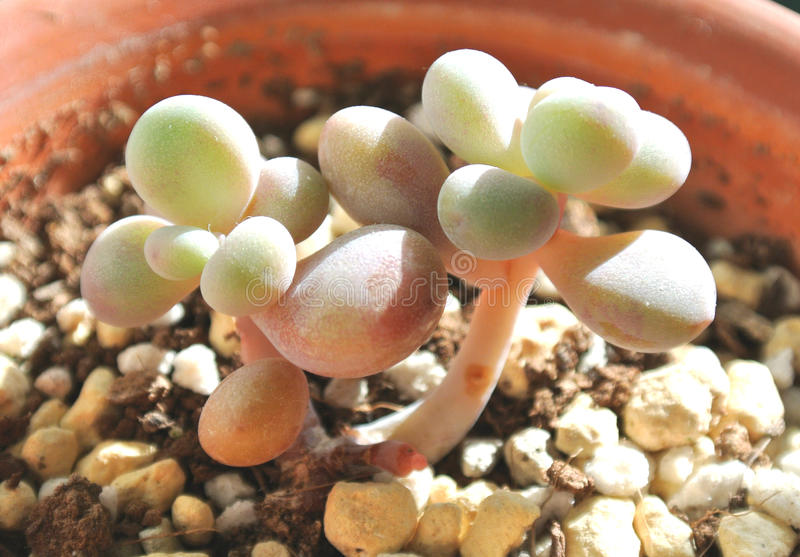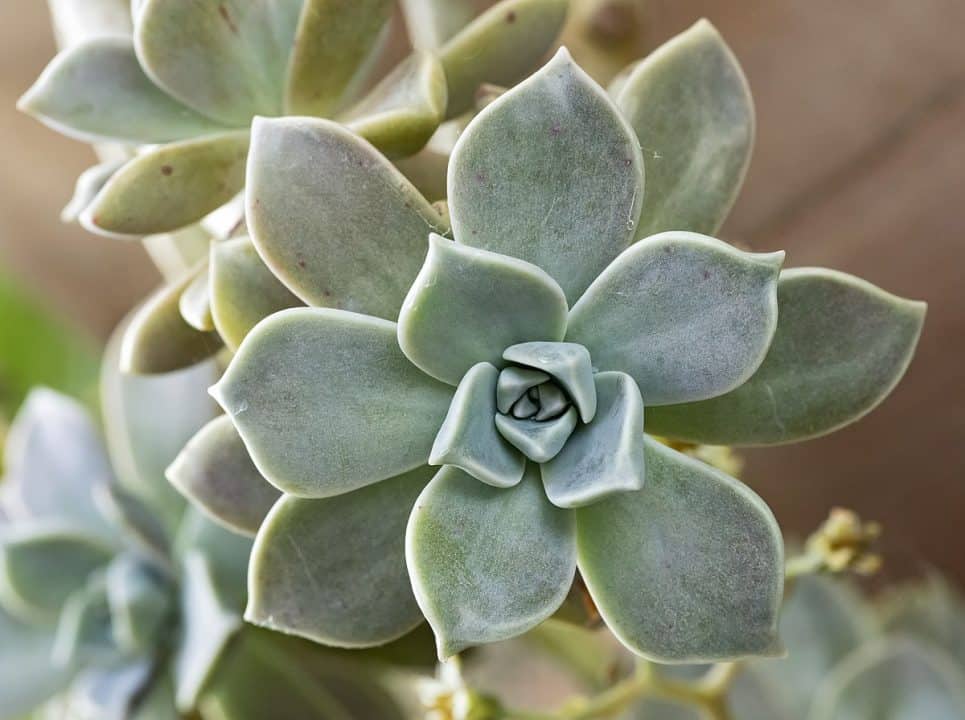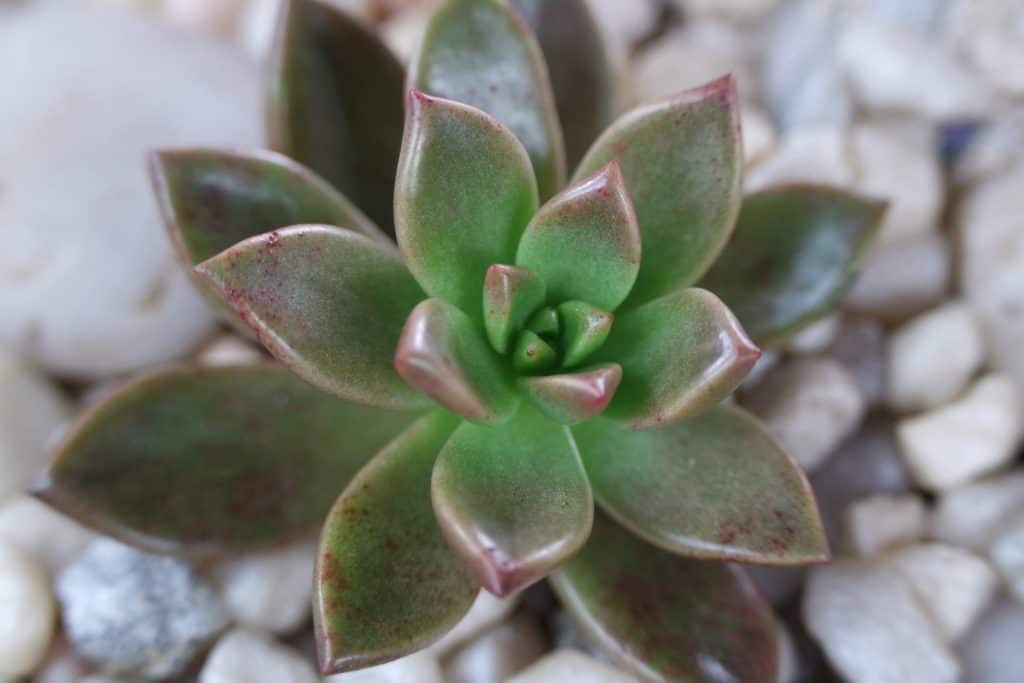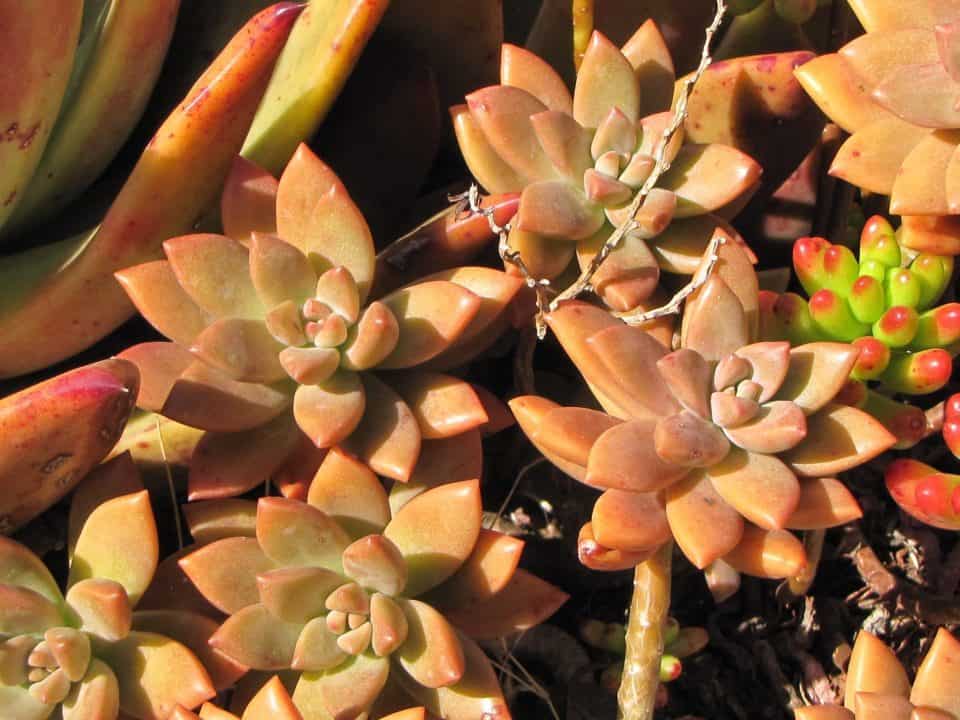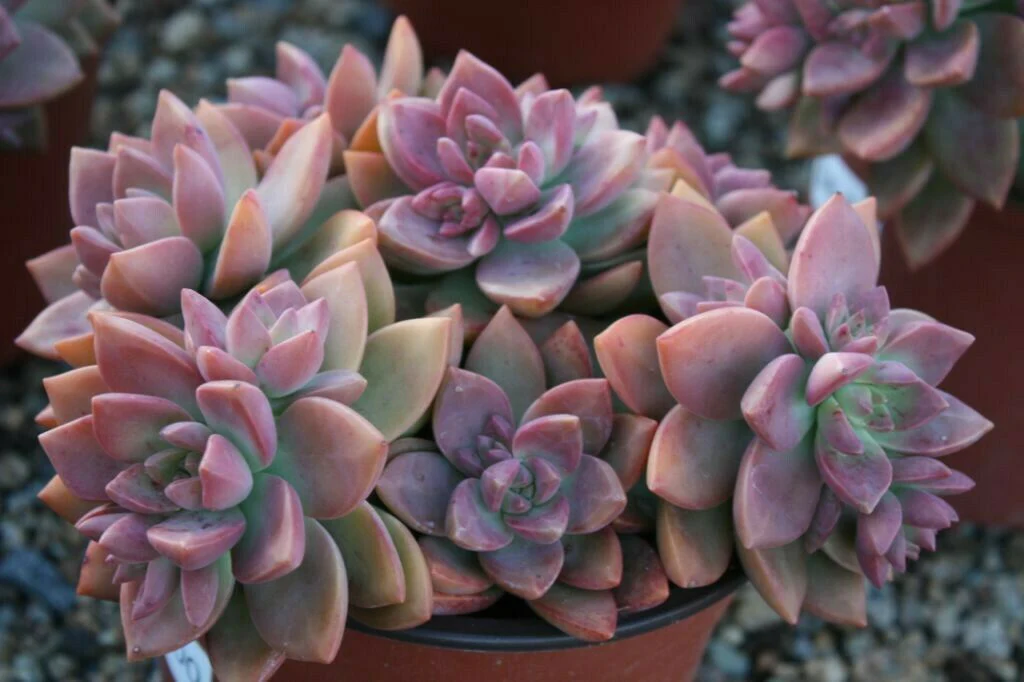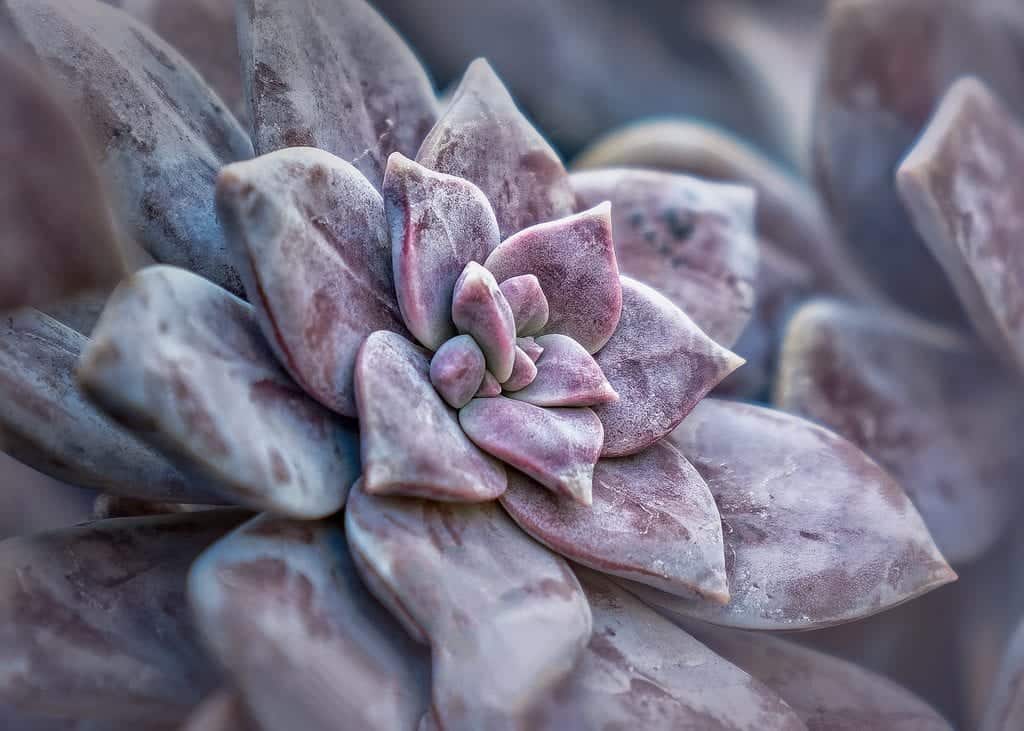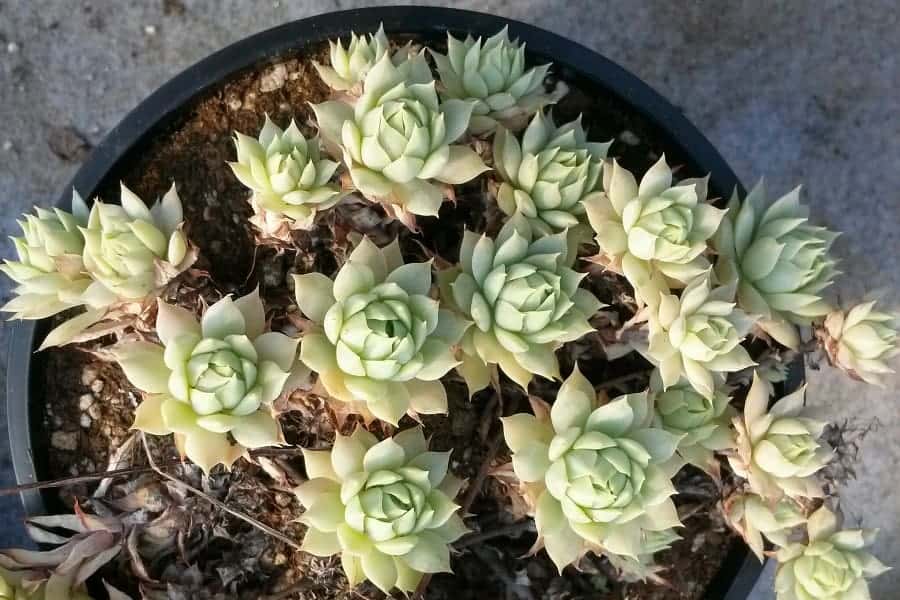Graptopetalum amethystinum, more commonly known as the lavender pebbles succulent, moon rock succulent, lavender succulent, or just lavender pebbles, is one of the most popular types of succulents available today.
If you’re not familiar with succulents, they are a diverse group of plants that store water in their leaves and stems rather than their roots or trunks, which makes them an excellent low-maintenance option for those who don’t have much time to care for houseplants.
The lavender pebbles succulent is an especially striking plant with its lavender flowers and purple stems that can grow up to 12 inches tall. If you’re looking for a low-maintenance succulent that requires little sunlight, try growing your graptopetalum indoors as one of your favorite indoor plants.
In addition to being a good starter plant, the Graptopetalum amethystinum has been shown to be one of the easiest succulents to propagate.
Origin and distribution
Graptopetalum amethystinum is a lavender succulent that originates from Mexico. It is also known as the moon rock succulent because of its silvery-grey leaves. This plant is drought-tolerant and can survive in both full sun and partial shade. Graptopetalum amethystinum can be propagated by stem cuttings or offsets.
Propagation may take up to two years, but these plants grow very slowly. The main disadvantage of this plant is its weak stems, which make it prone to breaking off when pulled from the ground. These plants are also susceptible to fungal infections if overwatered.
Fungal infections are more likely if the plant has been kept too wet for too long and not allowed to dry out sufficiently between waterings. Another issue with Graptopetalum amethystinum is that they have a tendency to form roots at the tips of their branches rather than along their length, making them difficult to transplant into pots with drainage holes.
Graptopetalum amethystinum propagation
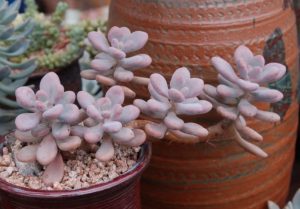
Graptopetalum amethystinum is a gorgeous plant that’s perfect for both indoor and outdoor gardens. These moon rock succulents can be propagated by seed or leaf cuttings. To propagate by seed, simply sow the seeds in well-draining soil and keep them moist until they germinate.
Alternatively, propagate with leaf cuttings. The leaves of this lavender pebbles succulent should have at least one node before you remove it from the mother plant; carefully remove a leaf and allow it to dry out before planting it in potting soil or perlite.
Place your graptopetalum amethystinum in full sun if possible to promote new growth and flower production. Water only when the top inch of soil has dried out and fertilized every month during the growing season.
Graptopetalum amethystinum care information
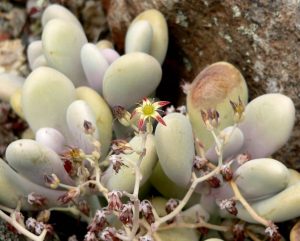
These beautiful lavender succulents thrive in hot, dry climates. They are very easy to care for and require very little water.
Light requirement
This succulent prefers bright, direct sunlight. If you live in a hot climate, it’s best to provide some afternoon shade. The leaves will start to fade in color if the plant is getting too much sun or if the light isn’t very bright.
I recommend placing this plant in front of a south-facing window for 8 hours per day or growing it under fluorescent lights indoors with lots of natural light coming through windows.
Soil/potting mix
To pot your Graptopetalum amethystinum, use a well-draining succulent potting mix or make your own. You can also add some perlite, pumice, or grit to the mix to help with drainage.
Water the plant when the soil is dry to the touch and is sure to empty any water that collects in the saucer underneath the pot.
Watering Graptopetalum amethystinum
These plants are very drought tolerant and can handle long periods without water. When you do water, make sure to give them a good soaking so that the water reaches the roots.
Allow the soil to dry out completely before watering again. If the leaves start to wrinkle, that means the plant is dehydrated and needs water immediately. In winter they should be watered every 10-14 days; in summer they should be watered every 5-7 days.
Fertilizer
The best time to fertilize your lavender pebbles succulents is in the spring and summer. Use a cactus fertilizer that is high in phosphorus. Apply the fertilizer every two weeks at half the recommended strength.
Water the plant before and after applying the fertilizer. It can be placed outside from April through October but should be brought inside during any freezing weather. Your lavender pebbles succulents will thrive for many years when cared for properly.
Temperature
The ideal temperature for Graptopetalum amethystinum is between 65-75 degrees Fahrenheit. If the temperature gets too hot, the leaves will start to wilt and if it gets too cold, the leaves will turn brown and fall off.
Humidity
Though it’s not picky about humidity, Graptopetalum amethystinum will do best in a room with average to high humidity. To increase the humidity around your plant, try grouping it with other plants, running a humidifier, or placing it on a pebble tray.
Watering your Graptopetalum deeply and then allowing the soil to dry out completely between waterings will also help to keep the leaves plump and prevent them from drying out and wrinkling.
The ideal humidity range is 40-80% relative humidity but anything below 40% is too low for this type of succulent. You can tell if your house has too low of relative humidity by checking whether the windows are foggy when you wake up in the morning; if they are, that means there isn’t enough moisture in the air for this succulent.
Pruning Graptopetalum amethystinum
If you want your lavender pebbles succulent to stay healthy and look their best, you’ll need to prune them regularly. Pruning helps remove dead or dying leaves and stems, encourages new growth, and prevents the plant from becoming overgrown.
Use a sharp pair of scissors or clippers to cut away old, discolored foliage below a node. Use sharp clean shears for neatness.
The hardy nature of this plant makes it a good choice for novice gardeners. In order to keep this low-maintenance houseplant looking its best, trim off any yellowing or browning leaves with sharp clean shears, remembering to trim them at the base where they join the stem.
You can also use trimmers that have a small blade on one side and a larger blade on the other so that you don’t accidentally damage nearby plants when cutting back heavy growth near them.
When to repot
Graptopetalum amethystinum, or lavender pebbles succulent, is a gorgeous plant that’s easy to care for. It’s important to repot this plant every two to three years, in the springtime.
To repot, simply remove the plant from its current pot and replant it in a new one that’s just slightly larger. Be sure to use well-draining succulent soil and water thoroughly after repotting. If you want your graptopetalum to bloom, put it outside in direct sunlight and keep the soil moist.
Dormancy/Winter rest
Graptopetalum amethystinum is a beautiful lavender pebbles succulent that originates from Mexico. It is a member of the Crassulaceae family and is closely related to the Sedum genus.
This succulent is drought tolerant and does not require much water. It can tolerate some shade but prefers full sun to partial sun. During the winter months, this succulent will enter into a state of dormancy.
In order to help promote this process, it is best to withhold watering until spring. The soil should be kept dry during this time as well in order for it to conserve its moisture.
Graptopetalum amethystinum flower & fragrance
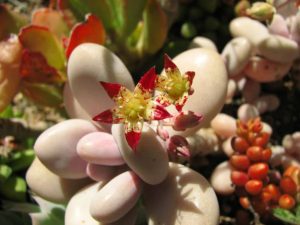
The Graptopetalum amethystinum is a beautiful and fragrant plant. The lavender flowers are stunning against the green leaves, and the plant emits a lovely fragrance that can fill a room.
Growth rate
Graptopetalum amethystinum is a slow-growing succulent that can reach up to 12 inches in height. It has purple, lavender, or pink flowers that bloom in the spring and summer. The leaves are fleshy and slightly triangular in shape.
Toxicity
The Lavender Pebbles succulents are considered non-toxic to humans and animals. However, the sap of these plants can cause irritation if it comes into contact with the skin. If ingested, the plants can cause stomach upset in humans and animals.
USDA hardiness zones
Graptopetalum amethystinum grows very well in USDA hardiness zones 10-11. It prefers full sun to part shade and likes moist, well-drained soil. The flower color ranges from pink to purple.
Pests and diseases
Graptopetalum amethystinum is a succulent that is susceptible to mealybugs, aphids, and spider mites. These pests can cause the leaves of the plant to turn yellow and/or brown and can eventually lead to the death of the plant.
To prevent infestation, it is important to regularly inspect your plant and remove any pests that are found. If you find a large number of pests on your plant, then you may want to use pesticides in order to get rid of them quickly.
One example is insecticidal soap which kills bugs by penetrating their waxy protective layer. You can spray this onto the leaves or roots of your plants every 3-4 days or according to package instructions.
